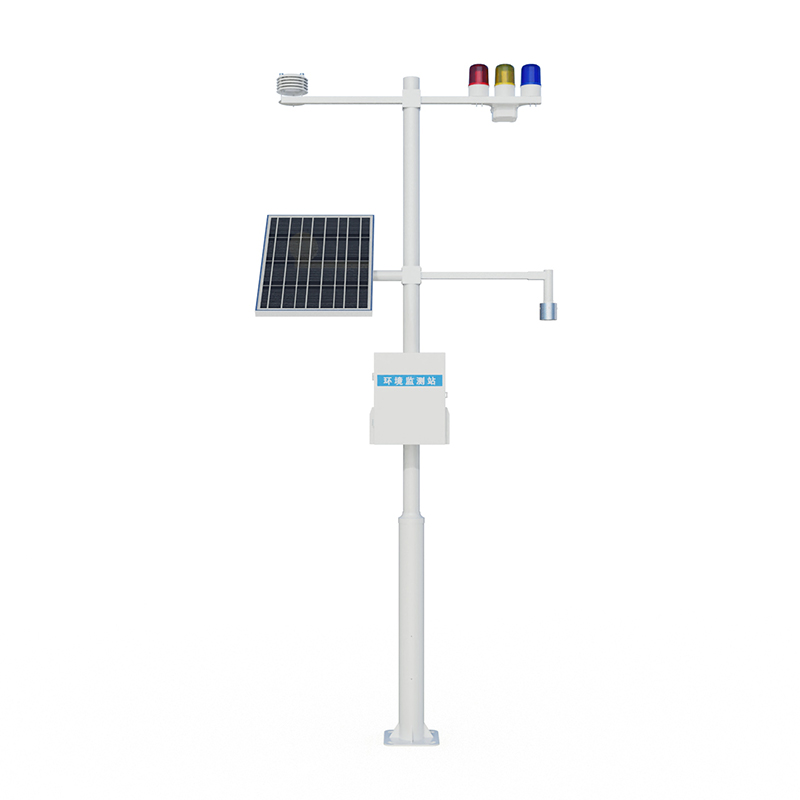Shandong Fengtu IOT Technology Co., Ltd
Sales Manager:Ms. Emily Wang
Cel,Whatsapp,Wechat:+86 15898932201
Email:info@fengtutec.com
Add:No. 155 Optoelectronic Industry Accelerator, Gaoxin District, Weifang, Shandong, China

Sales Manager:Ms. Emily Wang
Cel,Whatsapp,Wechat:+86 15898932201
Email:info@fengtutec.com
Add:No. 155 Optoelectronic Industry Accelerator, Gaoxin District, Weifang, Shandong, China

Model:FT-LD1
Brand:fengtu
1.Introduction to electric field monitor
electric field monitor is a fully digital electric field detection and lightning early warning platform.Its core electric field detection structure is based on the principle of charge induction and is developed using MEMS (micro-electromechanical system) technology.It does not wear and moveable mechanical components such as motors.It has outstanding advantages such as small size, low power consumption, high reliability, and easy integration.The system uses electric field differential combined with threshold threshold optimization lightning warning algorithm.Compared with the conventional threshold threshold method, it is highly likely to avoid false alarm problems caused by human interference (rainy days/strong winds/snow days/dust), further improving the accuracy of early warning.electric field monitor is accurate, convenient for networking and easy to install, and is mainly aimed at the application needs of atmospheric electric field detection and local short-term lightning warning in the fields of aerospace defense, meteorology, petroleum and petrochemical, power grid, scenic spots, mines, oil depots, military and other fields.
2.electric field monitor product composition
1.Lightning warning detector
2.Data processing host
3.Solar power supply system
4.Anti-direct lightning system
5.Surge system
6.Grounding system
7.Air temperature, humidity, and atmospheric pressure sensors
8.Acoustic and optical alarm level 3
9.Cloud data query and real-time display
3.Product features of electric field monitor
1.Users can connect the electric field monitor probe to the cloud server to achieve the purpose of remote monitoring.
2.Through the analysis of data, make more accurate judgments on the intensity and polarity changes of the thunder cloud electrostatic field
3.This system can be connected to the sound and light alarm system
4.The system software has complete network transmission functions; the data transmission completely follows the network protocol
4.electric field monitor Technical Parameters
| Device name | electric field monitor |
| Electric field measurement range | -100kV/m~100kV/m |
| Resolution | 0.1V/m |
| Accuracy | ±0.001%FS |
| Detection distance (radius) | 15KM |
| The weight of the whole machine | 36KG |
| Sensor weight | 710g |
| Input voltage | DC12V |
| Power consumption | 12VDC (2W@12V) (System) |
| size | 105*78mm (sensor); 3m (upper rod bracket) |
| Operating temperature | -10℃~60℃ (sensor); -40℃~80℃ (controller) |
| Deployment location (indoor/outdoor) | outdoor |
| Listing height | 2.1m (bracket) (sensor installation height 1.9m) |
| Management interface type | RS485-Modbus-RTU (sensor); RS485-json/RS485-Modbus-RTU (controller) |
| Alarm linkage (control) function | Level 3 early warning |
| Number and type of data interfaces | 3 aviation sockets, 1.Power supply, 2.RS485-json, 3.RS485-Modbus-RTU |
| GPRS data traffic requirements | 100M/month |
| Outgoing data frequency | 60s |
| Outbound data communication protocol (broadcast) | json |
5.Precautions for installing electric field monitor
1.Lightning warning probe should be installed on sunny days
2.The lightning warning probe should be installed outdoors without any obstruction and surrounding unobstructed objects.
3.Do not install it at the generator exhaust outlet, beside the telephone pole or under the high-voltage line.
4.Under abnormal circumstances, when protruding on the ground, close to the antenna pole or other equipment, the field strength and its test data may be disturbed.
5.Under wired mode, the wiring distance between the outdoor electric field meter probe and the indoor main unit should not exceed 100 meters.
6.The equipment should have good grounding when in use
7.For more details, please consult our company
8.If there is any parameter update without notice, the right to technical interpretation belongs to our company.
6.electric field monitor installation steps
1.Remove the full set of electric field monitor from the box
2.Fix the bracket to the designated installation position and fix it with bolts
3.Connect the flash point on the top of the lightning rod (optional) to the grounding wire, and the other end grounding wire is introduced from the inside of the bracket and out from the bottom hole of the bracket.After the grounding electrode and other grounding devices are installed, connect the lightning rod grounding wire.
4.Introduce the wires of the atmospheric electric field meter probe and the temperature and humidity sensor from the inside of the bracket, lead out from the hole in the middle of the bracket, and connect it to the main control box.There is an expansion box in the main control box.
5.Fix the solar panel to the bracket and connect the solar energy wire to the photovoltaic controller according to the color
7.Connect the battery to the photovoltaic controller
8.Connect the control line of the three-color sound and light alarm light to the alarm control module one by one according to the line color.
9.Contact after-sales service through the equipment number on the equipment box to obtain the login account
10.Open the computer and log in to the cloud platform to view data through the browser (Google or Huawei browser)
All-in-One Weather Sensors are sensors that have gradually become popular in recent years.It has a high level of integration, which can be regarded as a major highlight. It integrates the monitoring functions of six key meteorological parameters, namely ambient temperature, relative humidity, wind s...
In meteorological monitoring, movable meteorological observation instruments that integrate multiple meteorological elements play a significant role. Handheld Weather Station is a typical example among them. With obvious advantages, it is being increasingly widely used.The Handheld Weather Station h...
Precipitation is a key component of the hydrological cycle. Accurate and timely rainfall data has irreplaceable value for water resource management, flood disaster warning, agricultural irrigation, and climate research. Traditional manual rainfall measurement methods have limitations in timeliness,...
The meteorological environment monitoring sensor FT-WQX10 is a meteorological sensor launched by Fengtu Technology. It is a new type of meteorological monitor based on the Internet of Things technology developed by Fengtu Technology. It processes and analyzes atmospheric data to achieve remote monit...